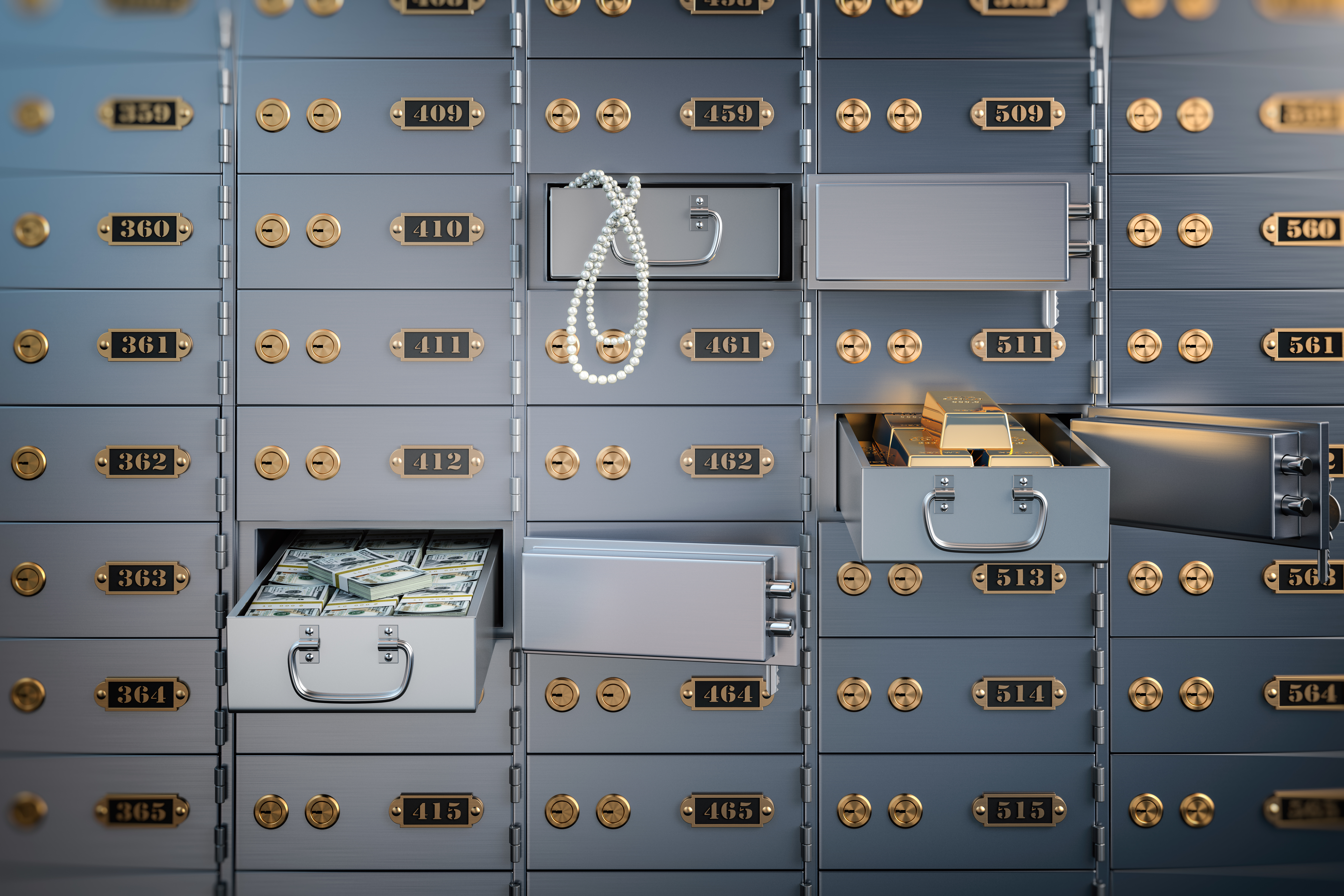When people want to protect important papers like their wills and trust documents, or valuables like rare coins or precious jewelry, they understand that it’s not generally wise to keep them laying around the house. Much better—so goes the conventional wisdom—to put those items in one of the 25 million safe deposit boxes at local bank branch offices around the U.S. There, they’ll be protected by a foot-thick steel door and a system with two keys, one kept by the customer, one by the bank.
Alas, it appears that safe deposit boxes are not quite as safe as they appear. A recent article in the New York Times highlights the case of an international expert in rare watches who stored some of his merchandise, 92 watches in all, plus rare coins, in a safe deposit box at a Wells Fargo bank branch in New Jersey. In a later reconstruction of events, it was discovered that Wells Fargo had tried to evict another customer for not keeping up with payments, and had drilled open the wrong safe deposit box. The customer returned to find that his “safe” deposit box was empty, missing millions of dollars worth of merchandise, and went to the management for an explanation. Wells Fargo executives looked around for the lost items in its storage, and found some but not all of the merchandise stored away in a separate location, shrugged their shoulders and told him that the loss had nothing to do with them. Oddly, they also offered the customer five watches that didn’t belong to him, which had never appeared on the bank’s own inventory of valuables in the box.
You would think that the contents would be insured or guaranteed by the bank, or that there would be laws that protect the customers who trustingly store their most precious valuables in safe deposit boxes. But apparently these “safe” repositories of peoples’ most valuable possessions are far from foolproof. Worse, they exist in a kind of legal gray zone. If you carefully read the leases, you discover that you, the renter, assume all risks of leaving property in the box. Wells Fargo’s safe deposit box contract caps the bank’s liability at $500. Citigroup limits it to 500 times the box’s annual rent. JPMorgan Chase has a $25,000 ceiling on its liability.
Meanwhile, the losses are quietly mounting up. In the last five years, there have been 44 safe deposit-related robberies, and uncounted number of bank errors, where boxes were mistakenly relocated, evicted or misplaced. In Maryland, a large bank closed several branches and lost hundreds of safe deposit boxes, costing one customer $500,000 worth of lost gold and gems. In each case, banks vigorously fight any requirement to make their customers whole, and bank regulators seem uninterested in getting involved, since (this might surprise you) no provision of federal banking law regulates safe deposit boxes.
The Wells Fargo case seemed cut-and-dried: the bank’s own inventory listed 92 watches in the safe deposit box, and only 85 were recovered. The bank freely admitted in court that its employees had mistakenly drilled into and terminated the box. One of the lost watches had an estimated value near $1 million, and there were missing gold coins. Yet after years of litigation and appeals, Wells Fargo has offered no restitution. The bank is apparently free, by law, to fight not to protect the assets in its “safe” deposit boxes.
Is there a better place to keep your valuables, power of attorney and other documents? Consider a sturdy home safe, and make sure that the combination is available to more than one person, in case the owner is somehow incapacitated.
.png)
.png?width=440&height=102&name=Wealth%20Conservatory%20Logo%20(1).png)




